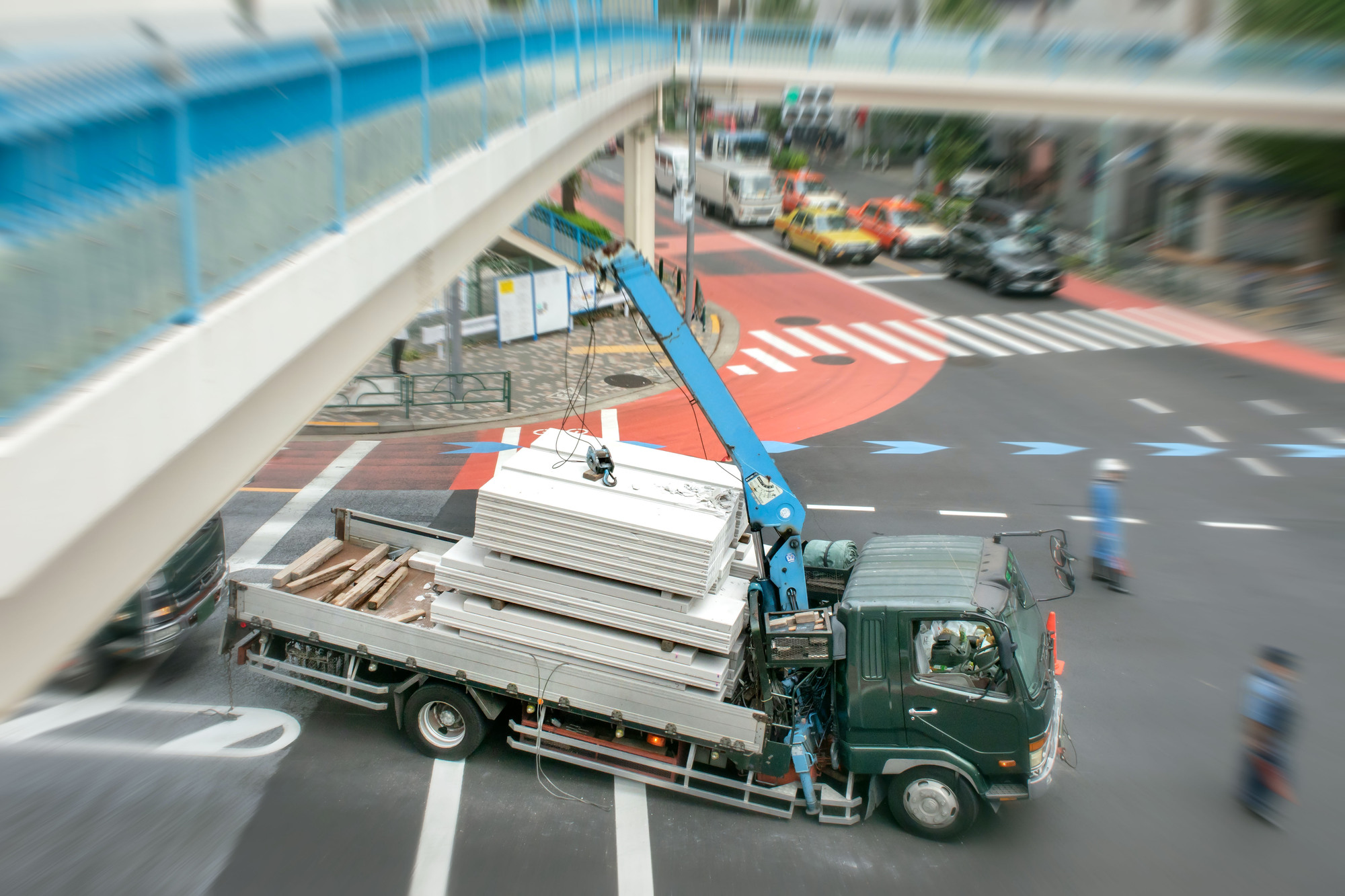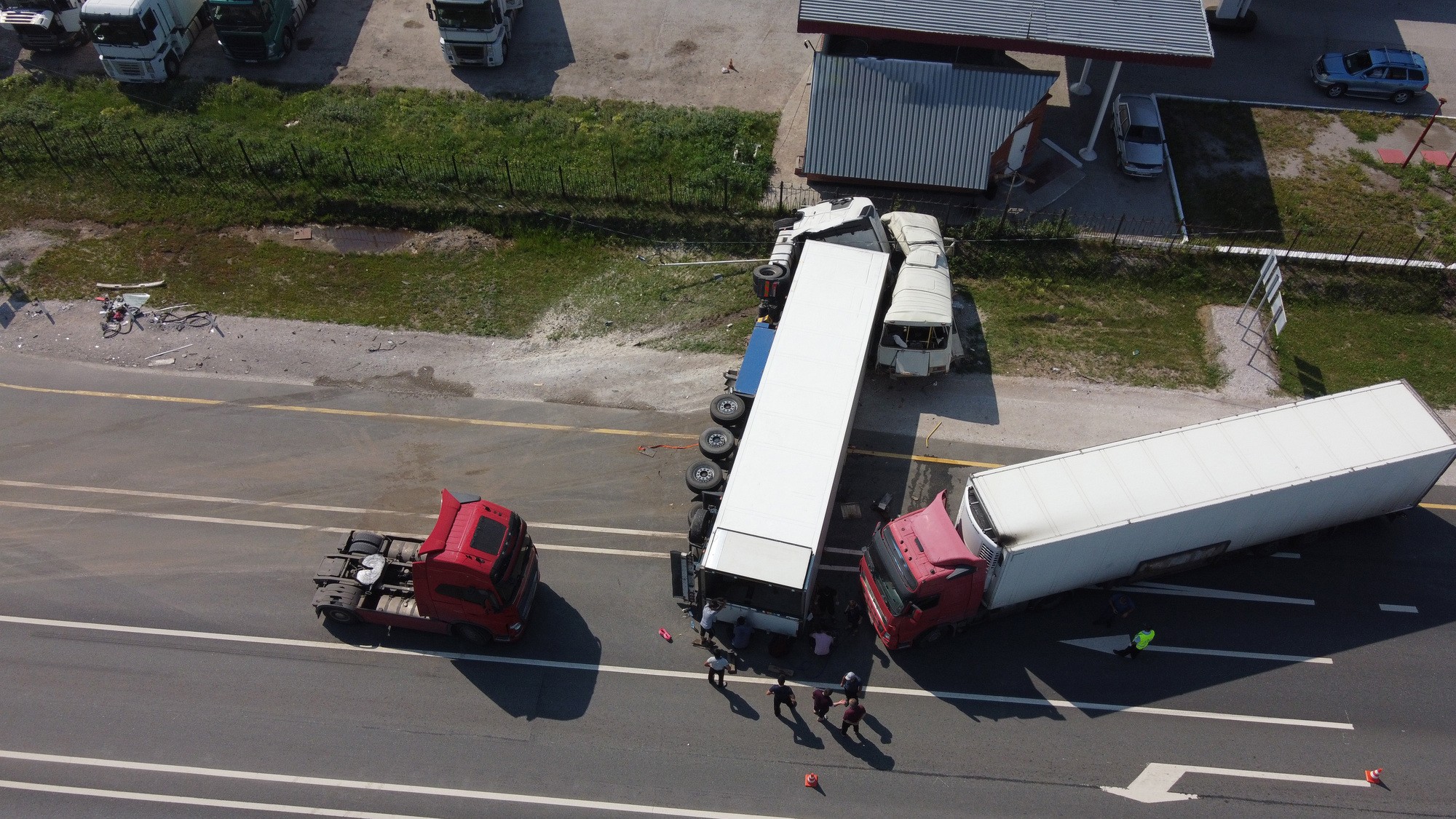- Heavy Duty
- Safety
Truck safety has emerged as a serious social issue amid the ongoing expansion of logistics worldwide. Accidents involving heavy-duty trucks, in particular, often result in significant damage, making it essential for each country to adopt prompt and effective safety measures.
This article presents truck accident cases from different countries, analyzes the background and causes, and introduces the safety measures and technological developments being implemented globally.
Global overview of truck accidents
Truck accidents remain a serious issue globally, with contributing factors varying by region. These causes often involve a complex combination of elements, including road infrastructure, legal systems, driver skills, and working conditions, making it difficult to attribute accidents to any single factor. This section provides an overview of global accident trends and introduces measures being implemented in different countries to improve safety.
United States
According to statistics from the Federal Motor Carrier Safety Administration (FMCSA), the United States recorded 15.51 fatal accidents involving heavy-duty trucks per one million people in 2021, a 46% increase from 10.6 cases in 2010.
Between 2020 and 2021, fatal crashes involving heavy-duty trucks increased by 18%, from 4,821 to 5,700 cases. The number of heavy-duty trucks involved in injury-causing accidents also rose by 11%, from 105,000 to 117,000. Of these, 21% were single-vehicle accidents, while 79% involved multiple vehicles.
Fatal accidents involving heavy-duty trucks occur frequently in rural areas and on major highways. Approximately 54% of such fatalities occur in rural regions, and 26% occur on interstate highways.
Japan
In Japan, truck accidents have been on a gradual decline, though challenges remain. According to data from the Japan Trucking Association, there were 200 fatal accidents in 2024 where commercial trucks were the primary party, an increase of one case compared to the previous year. Heavy-duty trucks accounted for approximately 55% of these cases, medium-duty trucks 41%, and light-duty trucks 3%.
Rear-end collisions represent about 35% of fatal and serious injury accidents, while pedestrian and cyclist collisions at intersections also remain a significant concern. Rear-end collisions on expressways and accidents during right or left turns on general roads are particularly pressing issues.
Brazil
In Brazil, where trucks are essential to supporting the country's vast logistics network, many accidents occur due to poor road conditions.
In May 2024, a truck carrying dye collided with a streetlight in Jundiaí, São Paulo State, causing blue dye to leak. The dye entered underground drains and flowed into a park pond, resulting in environmental contamination that affected birds, capybaras, and other wildlife.
In a separate incident in May 2025, a truck and bus collision on a highway in Teófilo Otoni, Minas Gerais State, led to the deaths of more than 30 people.
Africa
Truck accidents are a serious social issue in many African countries. In Kenya, a tragic accident occurred in 2023 when a heavy-duty truck carrying flammable materials crashed into a line of vehicles and exploded, killing more than 39 people. In 2024, another truck collided with cars and motorcycles in western Kenya, resulting in over 51 fatalities.
In Nigeria, fuel tanker explosions are frequent. In 2024, a tanker carrying fuel exploded, killing more than 140 people. Rising fuel prices have led many local residents to attempt to collect spilled fuel after accidents, often resulting in secondary explosions and additional casualties.
India
In India, fatal traffic accidents frequently occur due to reckless driving, poor road maintenance, and aging vehicles. In 2024, at least 12 people were killed when a bus collided with a container truck. Low compliance with traffic rules and issues related to vehicle overloading also contribute significantly to accident risks.
Indonesia
Indonesia faces a high incidence of accidents on major highways. In early 2024, a heavy-duty truck crashed at high speed into a line of vehicles waiting at a traffic signal in Balikpapan, East Kalimantan Province, causing 36 casualties.
China
China's rapid economic growth has led to significant expansion of both road networks and logistics volumes. However, safety measures have struggled to keep pace. In recent years, multiple incidents have occurred in which dump trucks or other large vehicles collided with high-voltage power lines while driving with their beds raised, resulting in numerous casualties.
Structural characteristics of trucks and accident risks

Unlike passenger vehicles, trucks have distinct structural features that significantly influence accident risks. A clear understanding of these characteristics, combined with appropriate driving techniques and safety measures, is essential to improving safety. For more on heavy-duty truck safety, please refer to the following article:
Risks arising from truck-specific characteristics
Due to their height and length, trucks face unique accident risks. The vehicle height increases the likelihood of collisions with structures such as signs and overpasses. The longer vehicle length leads to larger turning radii and creates a higher risk of side-swipe accidents when navigating curves or intersections.
Trucks also have significant blind spots, particularly directly below the front of the cab, along the sides, and behind the vehicle. These blind spots make it easy for drivers to overlook pedestrians, cyclists, and other nearby road users.
According to Japan’s Ministry of Land, Infrastructure, Transport and Tourism, the existence of these blind spots is one of the primary factors behind frequent pedestrian and cyclist collisions during right and left turns at intersections.
Cargo load conditions directly affect accident risk
The driving characteristics of trucks change significantly depending on the weight of the cargo. Heavier loads increase braking distances, making it difficult to stop quickly even with emergency braking. If cargo has a high center of gravity, vehicle stability may be compromised, increasing the risk of rollovers when cornering.
Improperly secured cargo also poses a serious hazard. Inadequate loading or insufficient securing can lead to load shifts during sudden stops or sharp turns, causing the vehicle to lose balance or even resulting in cargo falling onto the road and triggering secondary accidents involving other vehicles.
Global safety measures to prevent truck accidents
To reduce truck accidents, many countries have introduced a wide range of safety measures, including mandatory safety equipment, driver training programs, and legal reforms.
United States
Since 2018, the United States has required electronic logging devices (ELDs) to be installed in freight trucks to strictly manage driving hours and prevent driver fatigue. Electronic Stability Control (ESC) systems are also mandatory for heavy-duty trucks and buses to prevent skidding and loss of control.
Japan
In Japan, the Japan Trucking Association operates a safety certification system known as the G-Mark Program, which plays a key role in promoting truck safety. This system evaluates transportation companies' safety management efforts and certifies businesses that meet defined safety standards as "Excellent Safety Companies."
G-Mark certified companies have an accident rate less than half that of non-certified companies, serving as a useful benchmark for selecting safe transportation providers.
As of March 2024, approximately 18,000 businesses nationwide have obtained G-Mark certification, representing about 36% of all commercial trucks operating in Japan.
China
In China, trucks with a gross vehicle weight exceeding 12 tons are required to be equipped with the BeiDou Satellite Navigation System. This system enables real-time vehicle tracking, driver labor management, hazard zone alerts, and emergency response capabilities. These vehicles must also remain continuously connected to a government-operated satellite positioning platform for road transport vehicles.
Europe
In 2024, Europe expanded the scope of its New Car Assessment Program (Euro NCAP), which previously focused only on passenger vehicles, to include heavy-duty trucks for the first time.
The new safety assessment program, called TRUCK SAFE, objectively evaluates the safety performance of heavy-duty trucks. It provides valuable information to road authorities, logistics operators, drivers, and insurance companies for selecting safer vehicles.
Comprehensive measures are essential to prevent truck accidents
Preventing truck accidents requires a comprehensive approach that goes beyond driver skills. Measures must address vehicle structure, road infrastructure, working conditions, and regulatory frameworks. The international examples presented here show that combining safety technologies, driver training, and legal reforms is effective in reducing accidents.
Logistics safety serves as a foundation for both public well-being and economic stability. As a responsible member of society, UD Trucks remains committed to advancing vehicle technologies, fostering skilled personnel, and promoting a strong safety culture to achieve safe and reliable logistics. We will continue to pursue transportation solutions that earn the trust of society and support a sustainable future.



